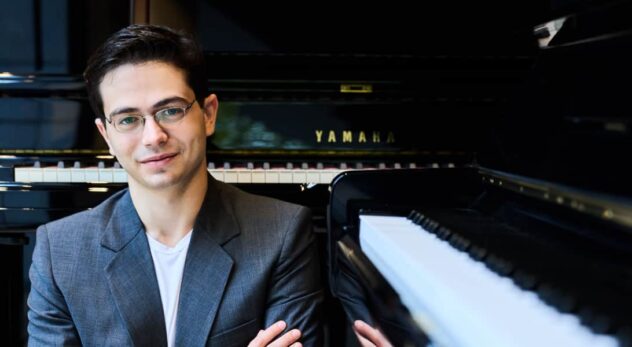 United Kingdom Bach, Beethoven: Ariel Lanyi (piano). Wigmore Hall, London, 14.12.2022. (JC)
United Kingdom Bach, Beethoven: Ariel Lanyi (piano). Wigmore Hall, London, 14.12.2022. (JC)

J. S. Bach – Prelude and Fugue in C-sharp minor, WTC I, BWV 849
Beethoven – Piano Sonata No.29 in B-flat major, Op.106, Hammerklavier
To programme Beethoven’s Hammerklavier Sonata in an hour-long lunchtime recital at the Wigmore Hall as his Leeds Competition 2021 prizewinner recital repertoire — along with Bach’s Prelude and Fugue in C-sharp minor from Book I of the Well-Tempered Clavier — is a bold move, especially for a young pianist. He demonstrates his serious intentions as an artist by tackling the towering edifice of the standard repertoire whose mighty technical challenges unfortunately do not overshadow nor aid in managing its musical ones.
But Ariel Lanyi showed himself to be just that: a serious artist with a powerful intellect, and to me, hearing him live for the first time, nothing seemed more suited to understanding him as a musician than hearing him play Beethoven’s monumental Hammerklavier Sonata.
Unfortunately, due to train delays, I did not manage to hear the Bach, but I was glad to have crept into my seat just as Lanyi launched into the Hammerklavier with the resounding B-flat major chord.
Despite Beethoven’s obvious idea of exploring the full voluminous capacity of the piano in the Hammerklavier — at least the piano of his own time — Lanyi never allowed the music to be bombastic but allowed the piano to ring sonorously. He was always very lyrical, adding rubato where his refined taste of Beethoven’s music deemed acceptable in the first movement, paying attention to the melodic lines that intertwine each other amidst the chordal tonalities. There was always a strong and clear sense of the counterpoint no matter how complicated the texture becomes — a mark of Lanyi’s intellectual prowess — which prevented a feeling of overcluttering. He was always breathing with the music as if it came from within, giving it a feeling of being very natural.
Lanyi not only showed clearly to his audience the clear logic of the composition — a very difficult thing to do with a piece as gigantic and with numerous twists and turns as the Hammerklavier — but also emphasised the importance of sonority in Beethoven’s musical structure, and how different tonal sonorities lead Beethoven down different paths. This was most apparent in the Scherzo, in which it is the constant pull and tug between B-flat major and B minor which creates the humorous quality of the unexpected.
Lanyi’s clear sense of the different tonal centres as organising principles in Beethoven’s music allowed him to portray the fluctuation between earthly struggle and heavenly reprieve in the exquisite Largo. It was also his deep listening and inspiration which gave the music the space it needed to lift itself from the page into something more fragile yet simultaneously precious; all this without wallowing too much. Lanyi combined intellectual understanding and passion to deliver an intensely personal interpretation of the Hammerklavier Sonata. This was not something he did to impress; this was something he wanted to share.
The notoriously difficult finale — with the monstrous fugue — was handled by Lanyi with great calm and finesse, allowing his audience to fully focus on the interweaving fugal subjects and countersubjects. Lanyi’s attention to the sforzandi also provided a sense of rhythmic drive to the movement. Given the acoustics of the Wigmore Hall, one could have wished for slightly less pedal to create an even more articulate performance, which would have driven up the intensity and excitement this performance was already imbibed with.
Lanyi is a pianist who combines passion with great intellect. His deep understanding of the music he plays creates memorable and personal performances for his audience. I look forward to hearing more of his playing in the future.
Jeremy Chan
